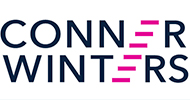|
|||||||
HEALTH LAW ALERT |
|||||||
What You Need to Do if You Received Money from HHSStarting on April 10, the U.S. Department of Health & Human Service (HHS) began distributing $30 billion of the overall $100 billion in relief funds allocated to health care providers in the Coronavirus Aid, Relief, and Economic Security (CARES) Act. Within 30 days of receiving a payment from HHS, providers must sign an attestation confirming receipt and agreeing to the Relief Fund Payment Terms and Conditions. It is critical that providers understand these Terms and Conditions and the ongoing responsibilities attached to acceptance of these payments. Failure to carefully abide by the Terms and Conditions could result in a demand for repayment when audits occur. In fact, HHS just recently issued a proposed rule stating that the Civil Monetary Penalty Act authorizes the Office of the Inspector General to investigate any fraud and abuse by providers who receive these payments. Q: Who is eligible for a distribution from this initial $30 billion of relief funds, and how was the payment amount calculated? A: All facilities and providers that received Medicare fee-for-service (FFS) reimbursements in 2019 are eligible for a distribution from this initial $30 billion. The payment amount is based on the provider’s share of the total Medicare FFS reimbursements in 2019. Notably, HHS has expressed its intent that the remaining $70 billion in relief funds be targeted toward providers in areas particularly affected by COVID-19, providers with lower shares of Medicare reimbursement (such as those serving a high Medicaid population), and providers needing reimbursement for the treatment of uninsured patients. Q: My organization received a direct deposit – what now? A: Within 30 days of receiving the payment, all providers—regardless of the payment amount received—must sign an attestation confirming receipt of the funds and agreeing to the Terms and Conditions. If a provider fails to do this, HHS will assume that the provider has consented to the Terms and Conditions. You can download a copy of the Terms and Conditions, as well as access the Attestation Portal, at https://www.hhs.gov/provider-relief/index.html. Q: Do I need to read the fine print? A: Yes. Although receiving the payment may have been easy, ensuring that your organization can survive an audit down the road will require a detailed understanding of the Terms and Conditions. While it is impossible to cover all of the Terms and Conditions in this alert, the following are a few of the most important points to consider:
The major risk is that facilities will not be able to prove that their relief payments were spent properly, in which case they will have to repay the funds when audits occur. Conner & Winters’ Health Care Practice Group is monitoring developments related to these distributions under the CARES Act. We are unable to provide advice in the abstract and without knowing the details of your particular situation. If you have specific questions about your circumstances, please contact our health care attorneys to discuss. |
Elise Brennan Teresa Burkett Amy Wilbourn Kathryn Burnett Russell Ramzel Caroline Guerra Wolf Emily Mizell
|
||||||
| Subscribe | Unsubscribe | |||||||
